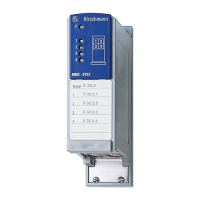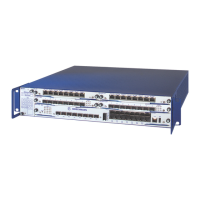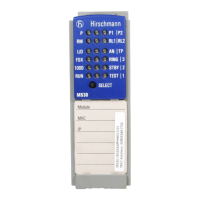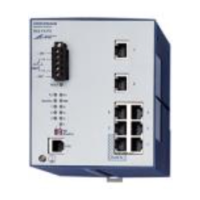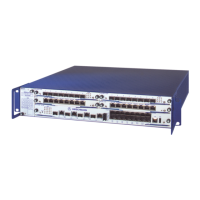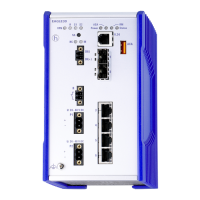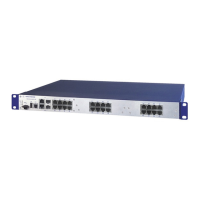Assistance in the Protection from Un-
authorized Access
98
6.3
Telnet/internet/SSH access
UM Basic Configuration L3P
Release
7.1
12/2011
The device uses HTTPS protocol and establishes a new connection.
When the session is ended and the user logs out, the device terminates
the connection.
Note: The device allows you to open HTTPS- and HTTP connections at
the same time. The maximum number of HTTP(S) connections that can
be open at the same time is 16.
Open the Security:Telnet/Internet/SSH Access dialog.
Tick the boxes Telnet Server active, Web Server(http)
and Web Server(https). In the HTTPS Port Number box, enter
the value 443.
To access the device by HTTPS, enter HTTPS instead of HTTP in
your browser, followed by the IP address of the device.
enable Switch to Privileged EXEC mode.
# ip https server Switch on HTTPS-server.
# ip https port <port_no> Set the HTTPS port number for a secure HTTP
connection.
- As-delivered state: 443.
- Value range: 1-65535
# no ip https server
# ip https server
If you change the HTTPS port number, switch the
HTTPS server off and then on again in order to
make the change effective.
# show ip https Optional: Show the status of the HTTPS server
and HTTPS port number.
# ip https certgen Create X509/PEM certificate.
# copy tftp://<server_ip>/
<path_to_pem>
nvram:httpscert
Upload an X509/PEM certificate for HTTPS using
TFTP.
# no ip https server
# ip https server
After uploading the HTTPS certificate, switch the
HTTPS server off and then on again in order to
activate the certificate.
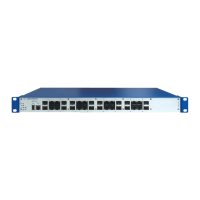
